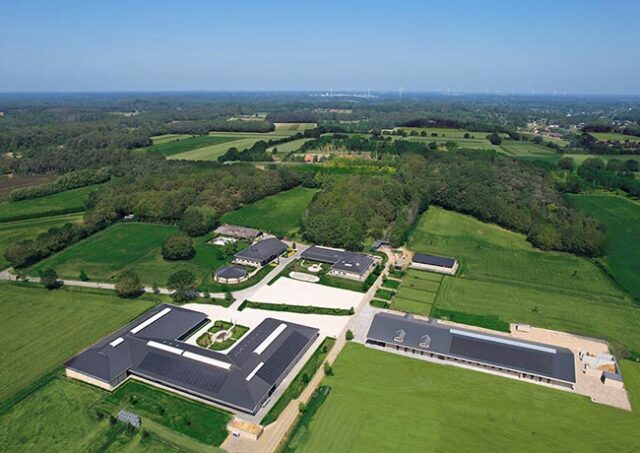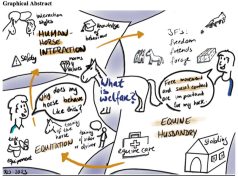By Dr. Kaatje Ducheyne DVM, PhD, DipECAR, MVetMed, CertIAVC
Horse breeding has experienced significant advancements in recent decades. Nowadays, the majority of mares are bred through Artificial Insemination (AI), and Embryo Transfer (ET) has become a common practice in equine breeding.
Over the last decade, a combination of two techniques, Ovum Pick Up (OPU) and Intracytoplasmic Sperm Injection (ICSI), has gained prominence.
Ovum Pick Up (OPU), also known as Transvaginal Follicle Aspiration (TVA), is a procedure for oocyte recovery where oocytes (eggs) are collected by aspirating the follicular fluid from the ovaries. The collected oocytes are then fertilised by injecting a single spermatozoon into each oocyte, a process known as Intracytoplasmic Sperm Injection (ICSI). This combination of OPU and ICSI represents a significant technological advancement in equine reproduction, providing new opportunities for genetic improvement and breeding efficiency.
Ovum Pick Up (OPU) is performed as follows: An ultrasound probe, equipped with a needle guide, is inserted into the mare's vagina to visualise the follicles. The ovary is then grasped via the rectum and held against the vaginal wall in front of the ultrasound probe to identify the follicles. A single oocyte is present in each ovarian follicle, but these oocytes are too small (125-150 m) to be seen via ultrasound. To recover the oocytes, the fluid of each follicle is aspirated by inserting a needle into them. The aspirated follicles are then flushed several times to enhance the oocyte recovery rate. The OPU procedure is performed on a standing mare under sedation and can take between 30 minutes to an hour, depending on the number of follicles present.
After aspirating the follicles, the recovered fluid is filtered similarly to embryo flushes and searched for oocytes. The oocytes are then transferred into a special transport medium and shipped to a specialised ICSI lab without losing their fertility. Once at the laboratory, the oocytes are placed in a maturation medium for 24 hours because they are not yet ready to be fertilised. During the normal cycle of the mare, oocyte maturation occurs while the follicle grows, secreting hormones and other factors to promote this maturation. The maturation medium mimics the follicle's conditions to allow the oocytes to mature.
After 24 hours of incubation, the oocytes are assessed under a microscope to evaluate their maturation. Only matured oocytes are fertilised. Fertilisation in the lab is done via Intracytoplasmic Sperm Injection (ICSI), where a single spermatozoon is injected into the oocyte. The oocyte is then transferred into another medium to develop into an embryo, a process taking 6-9 days. The fertilised oocytes that successfully develop into embryos are then frozen and stored in liquid nitrogen. The embryos can be shipped back to the clinic, thawed, and transferred to a recipient mare at any suitable time during the breeding season.
This approach avoids the stress of synchronising donor and recipient mares, as an embryo is only thawed when a suitable recipient is available. Unlike human oocytes, horse oocyte freezing is not yet optimised, so the stallion selection must be made at the time of OPU. Additionally, unlike human IVF, horses do not require hormonal stimulation with daily injections before OPU.
Breeders may choose OPU-ICSI for various reasons, such as subfertility in the mare. With OPU-ICSI, early embryonic development occurs in the lab, bypassing potential fertility issues within the mare's reproductive tract, such as uterine adhesions, oviduct problems, or infections. This technique also allows efficient use of limited semen from stallions. OPU can be performed year-round, mainly from autumn to early spring (but also during the breeding season), unlike AI and ET, which are limited to the mare’s physiological breeding season (spring and summer). Additionally, oocytes can be collected for ICSI even if a mare suddenly dies (e.g., from colic), allowing the owner to still produce a foal from her.
Breeding differs ethically from other veterinary interventions since it does not involve treating sick or injured horses. Therefore, veterinarians and breeders must prioritise the welfare of the horses involved. Although OPU is more invasive than AI and embryo flushing, it has a low complication rate, especially when performed by an experienced team. During the 30-minute OPU procedure, the mare receives individually adjusted sedation, and her comfort is closely monitored. If the mare does not tolerate the procedure, it will be stopped to ensure her welfare. Afterwards, the mare is monitored in her stable. OPU may have less impact on some mares compared to AI and ET, which require multiple scans over several days or weeks, especially for mares with fertility issues.
Recent data show that approximately 75% of OPU sessions yield at least one embryo, with an average of 1.7 to 2 embryos per session (range 0-13). This represents a significant improvement since 2016 when the success rate was only 50%. These results contrast with traditional embryo flushing after AI, where the recovery rate is 50-65%, with rarely more than one embryo. Therefore, OPU-ICSI can be more efficient than traditional embryo transfer for many mares.
The success of an OPU session depends on several factors, including the number of follicles present on the ovaries, with an average recovery rate of 50-60% of oocytes from aspirated follicles. We advise that mares have at least 15 follicles of 1cm or larger. Other factors, such as the fertility of the mare and stallion, also contribute to success. For instance, mares that have been successful once are likely to produce embryos again in subsequent sessions. Transfer of ICSI embryos results in 70-80% pregnancy rates, although there is a slightly higher embryo loss rate (15% vs. 10%) compared to traditional ET or AI. Ultimately, 60% of transferred ICSI embryos result in live births... To read the complete article you need to be a subscriber
CLICK HERE TO SUBSCRIBE TO BREEDING NEWS
SUBSCRIBERS CAN READ THE COMPLETE ARTICLE BY LOGGING IN AND RETURNING TO THIS PAGE




